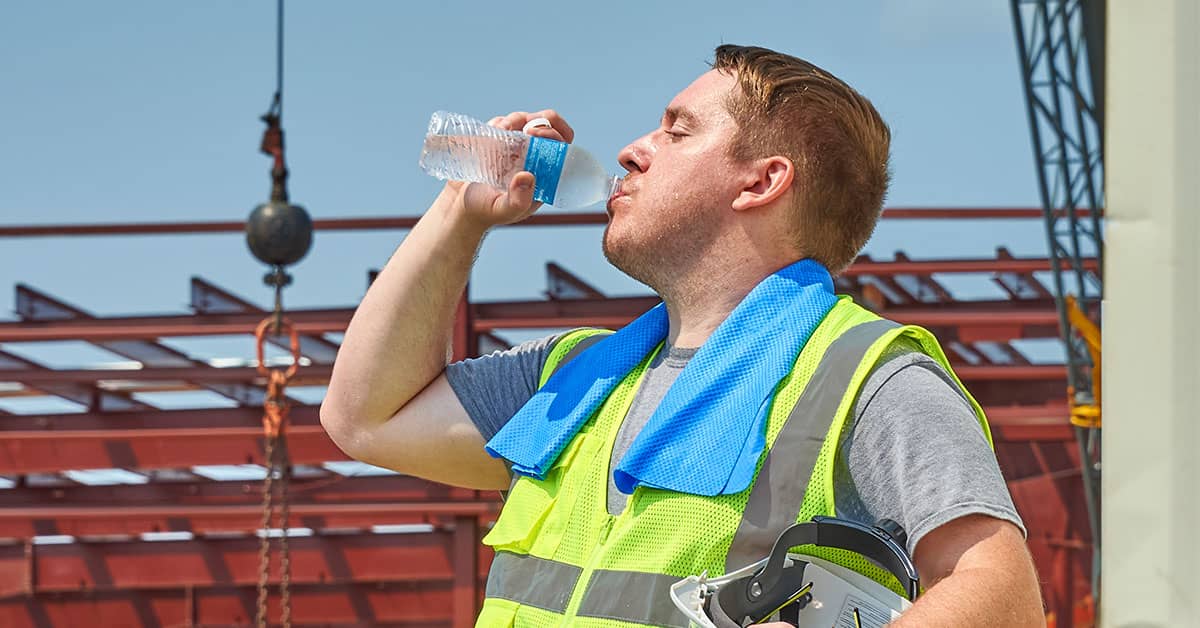The heat is on! Are your workers protected?
Date Posted: 05/13/2024

Thousands of workers become sick each year from occupational heat exposure, and fatalities due to heat increased 18.6 percent in 2022, rising to 51 from 43 in 2021. As temperatures continue to climb this summer, it’s important to ensure your workers are protected.
Although OSHA does not have a standard that specifically addresses employee exposures to extreme heat, the agency does conduct heat inspections and issues General Duty Clause citations when heat hazards are present. In April 2022, OSHA issued a National Emphasis Program (NEP) on outdoor and indoor heat-related hazards, which includes a targeted enforcement component.
Keeping things cool
Employers are responsible for providing workplaces free from recognized safety hazards, including extreme heat. At a minimum, employers should provide adequate cool water, rest breaks, and shade or a cool rest area. New or returning employees should be given the chance to gradually get used to working in hot temperatures. Nearly three out of four workers who die from heat-related causes die in their first week on the job.
Employees should be trained on heat illness prevention, signs of heat illness, first aid, and how to act immediately if they or another employee appears to be suffering from a heat-related illness. Signs of heat illness may include:
- Thirst,
- Irritability,
- A rash,
- Cramping,
- Dizziness,
- Nausea or vomiting,
- Confusion,
- Slurred speech.
Confusion, slurred speech, disorientation, or unconsciousness are signs of heat stroke, which is the most serious type of heat illness. When these symptoms are present, call 911 immediately and cool the worker with cold water or ice until help arrives.
First aid for heat-related illness involves taking affected workers to a cooler area such as in the shade or air conditioning and keeping them cool. This may involve removing outer layers of clothing (especially heavy protective items), immersing the worker in cold water or placing wet towels on them, and/or using fans to circulate air. Affected workers should not be left alone, as the illness can rapidly become worse.
Some things OSHA will consider during an inspection include:
- Was there unlimited cool water that was easily accessible to employees?
- Did the employer require additional breaks for hydration?
- Were there scheduled rest breaks?
- Was there access to a shaded area?
- Did the employer provide time for acclimatization (gradually getting used to the heat) of new and returning workers?
- Was a “buddy” system in place on hot days?
- Were administrative controls used (earlier start times, and employee/job rotation) to limit heat exposures?
- Did the employer provide training on heat illness signs, how to report signs and symptoms, first aid, how to contact emergency personnel, prevention, and the importance of hydration?
Employers can use these considerations to determine if their heat prevention methods measure up.
How Safety Management Suite Can Help
Although OSHA doesn’t have a heat standard, they do expect employers to protect workers from temperature extremes. Your peers may have best practices, suggestions, and even policies they’ve created around that topic. Our Discussion Tool in the J. J. Keller® SAFETY MANAGEMENT SUITE is a great place to pose your questions and get feedback from your peers on what works for them.
E-mail Newsletter
Sign up to receive the weekly EHS Insider email newsletter for safety articles, news headlines, regulatory alerts, industry events, webcasts, and more.